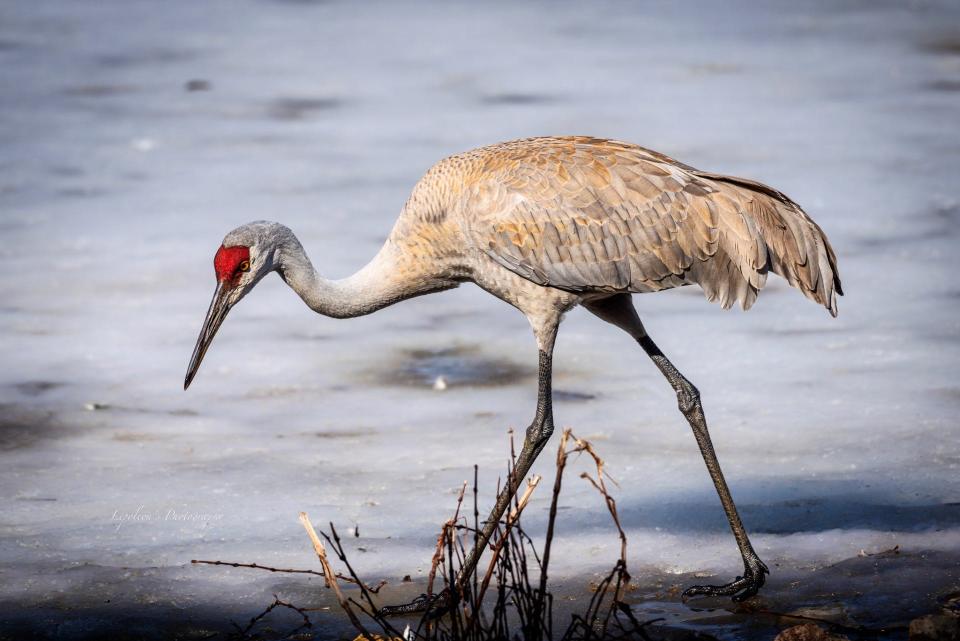Sandhill crane hunting season isn't a fit for Wisconsin. It would further divide us. | Opinion
I am concerned with recent efforts to begin a hunting season on sandhill cranes in Wisconsin. I believe it is not a fit for Wisconsin. Sandhill cranes, the bird referred to as “wildness incarnate” by the late Aldo Leopold, nests and migrates throughout the state.
Nearly hunted to extinction until the Migratory Bird Protection Act of 1918 was passed giving the birds protection, the population has flourished to the point where they are considered a pest by some farmers.
To others, they are a welcome harbinger of spring on the first weekend in March when they arrive back in the state from wintering further south. Should Wisconsin open a hunting season on sandhill cranes?
That decision will eventually come, as Sen. Mary Felzkowski, R-Irma, is circulating a proposal for a bill to open a hunting season, and the Wisconsin Waterfowl Association and Wisconsin Wildlife Federation have laid some groundwork promoting a season.
James Causey: Time to revive a mayoral takeover at MPS or face a perpetually failing system
Yes, the birds are hunted in some other states, and yes, the Mississippi Flyway has given the state permission to hold a season, but it's not the case across the board.
Look no farther than Nebraska, a state that has tens of thousands of cranes that migrate through and nest there. That agricultural state realizes the substantial tourism economy provided by the cranes, and it does not hold a hunting season. Surveys have shown that many Wisconsin citizens do not want a hunting season on sandhill cranes.
What’s right for other states is not right for Wisconsin
Wisconsin has a long and admirable tradition of hunting. Among its benefits are natural meat added to the table; license dollars used to fund conservation programs, and hunting often advances participants to a stewardship ethic for land and wildlife.
I am a lifelong hunter, as many experiences with Dad and my brothers helped make me who I am. I am proud to be a hunter. Hunting regulations are a combination of biological facts along with sociological concerns. The actual combination of the two happens throughout the regulation process, but are most visible when a proposed regulation goes before the state legislature and the Natural Resources Board.
Regulations differ from state to state. For instance, it’s legal for North Dakota hunters to hunt and shoot tundra swans; Wisconsin hunters cannot. The swan is not listed as a game bird in Wisconsin.
South Dakota hunters hunt and shoot prairie chickens; Wisconsin hunters do not. The bird is listed as threatened in Wisconsin, where notably an organization of hunters (the Dane County Conservation League), has raised thousands of dollars to preserve land in central Wisconsin; now the stronghold of the dancing birds.

Sandhill crane hunting season would create further divide
The biggest reason to not have a hunting season on sandhill cranes in Wisconsin: It will create a larger divide between people who hunt and non-hunters.
A proposal to begin a hunting season on sandhill cranes will further divide Wisconsin’s hunters and non-hunters.
And non-hunters are not necessarily anti-hunters. Non-hunters, the majority of the state’s population, allow hunting as long as it is based on science and ethically done. They will be instrumental in voicing opinions, as will hunters who do not support such a season.
Developers say wood is sustainable. hose claims don't always check out.
The often-cited reason to begin a hunting season is crop damage caused by cranes. In recent years the DNR and USDA Wildlife Services usually issue 180 to 200 permits for farmers to shoot cranes causing crop damage, often to freshly sprouting corn. Already about 1,000 birds are shot yearly.
Farmers are asked to try crop depredation prevention methods, including use of Avipel, a bird repellent seed treatment. Protecting plants is a part of the farmer’s normal routine, just as they add fertilizer and herbicides.
Many people believe a hunting season in the fall will do nothing to eliminate crop depredations of newly sprouted corn in the spring.
Wisconsin needs hunters and non-hunters to band together
Instead, hunters and non-hunters need to band together to combat the major issues: climate change; loss of wildlife habitat; and decreasing funding for conservation.
The DNR wildlife and law enforcement functions are funded primarily by hunting licenses.
The general citizenry, who often say they support wildlife, need to have some skin in the game. Perhaps something like Minnesota’s 3/8 of 1% from the sales tax, or a new excise tax on outdoor equipment.
It’s time for both groups to get together. A hunting season on sandhill cranes will instead further widen the gap rather than help close the gap.
Tim Eisele is a freelance outdoor writer and manager of private land in Crawford County.
This article originally appeared on Milwaukee Journal Sentinel: Wisconsin sandhill crane season isn't reality yet, but it's a bad idea
Solve the daily Crossword

